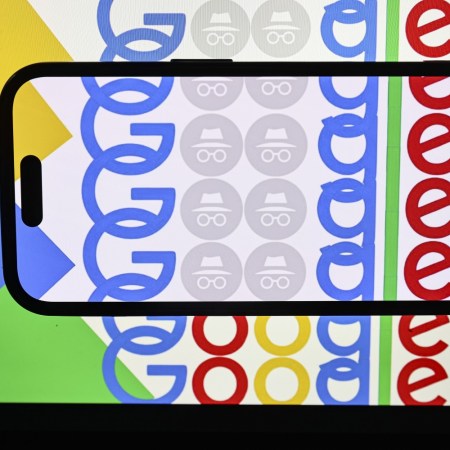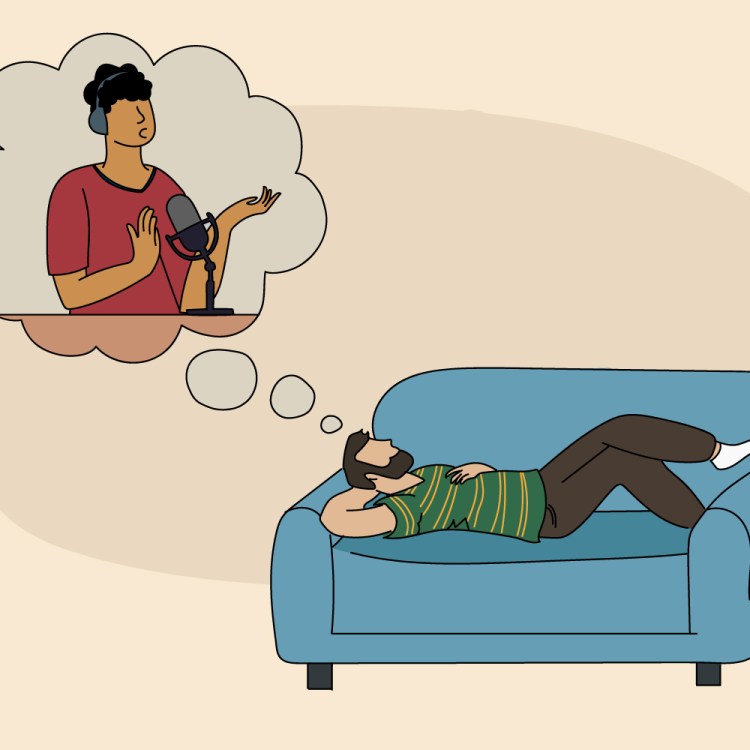I never liked the word horny, but I’ve had no choice but to get used to it.
It has nothing to do with any sex-talk squeamishness on my part — just last week I said the word “ass-fucking” loudly enough in a restaurant that my date felt compelled to interject, “Shh, the Upper East Siders will hear you.” My disdain for horny doesn’t come from a place of modesty; I’m not even entirely sure where that place is or how to get there. I just always found horny a little juvenile. Itchy. Locker-room talk for the middle-school set.
It turns out I’m not alone. One of Twitter’s reigning queens of internet horniness, Sophia Benoit herself, agrees with me — or at least she used to. These days Benoit is GQ’s resident “horny expert,” writing weekly on sex and relationships for the magazine as well as its new monthly column, “Horny on Main.” There was a time, however, when even Benoit cringed at the word.
“It was toad-like and just vile,” she tells InsideHook. “Like middle-school boy cringy. I think it used to be very much like, jerking off in the boys’ gym bathroom or whatever.”
But things have changed. While 25 years ago the New York Times’ William Safire was cautiously pondering whether the word “ha[d] crossed the line from slang to colloquialism, from mild vulgarity to acceptable informal usage,” it is all but inescapable today, cropping up in contexts more casual — if more unusual — than Safire likely could have ever imagined.
A recent Jezebel headline called Prince Harry “horny for a second baby,” while the day before, TV writer Danielle Weisberg announced she was “horny for not being tired” on Twitter. Last week the New York Post had the timeline debating the horniness of chicken parm, and a year ago both The Cut and Vice published year-end roundups recounting “the horniest things that happened in 2018,” which included such varied items as the Hot Duck (“impossible not to be horny for”), turtle-necked thong bodysuits (“horny turtlenecks“) and of course the iconic Horny Beto Tweet.
This vast array of seemingly incongruous things the internet has recently deemed horny reflects not only an increase, but also a shift in the word’s usage. While traditionally the word — derived, as Safire was obliged to explain a quarter of a century ago at the behest of “nervous” editors, from the Latin cornu for “horn,” as in a hard, pointed protuberance (you get it) — has referred to a state of sexual excitement or arousal, it is now being used to describe desire and its objects in a more general sense.
Arousal is physical, horniness is spiritual.
Benoit addressed this flexibilty in the first installment of “Horny on Main” back in October, writing, “Typically the word ‘horny’ is invoked exclusively in sexual contexts, but take it from me, a person who writes about sex on the internet, it’s very fun to apply it more broadly,” before going on to identify the difference between traditional “daaaaaaaaaamn-horn” and the “emotional-horn” that largely informs the column.
“Horny doesn’t mean sexual necessarily,” she tells InsideHook. Often, the word is used as a cheeky, playful expression of more PG forms of desire or admiration. Benoit likens this usage of the term to older, but similarly hyperbolic slang. Rather than saying a dress is, for example, “‘to die for,’” says Benoit, “we’re like, ‘Oh my God, this is the horniest thing.’”
That is not to say, however, that the word is divorced from its sexier origins entirely — if at all.
“I don’t think the definition of horny has changed that much,” says Atlantic staff writer Amanda Mull, who recently wrote of Facebook users’ enduring capacity for online horniness in the face of the platform’s attempt to ban suggestive emojis. “I just think people are using it to its fullest extent.”
In another recent contribution to the growing horny discourse, Mull took to Twitter earlier this month to celebrate the word’s unparalleled but unapologetically unrefined ability to describe an extremely specific kind of desire.
“A wonderful thing is that there’s no demure or dignified synonym for ‘horny,’” she wrote. While multiple replies countered with the more clinical “aroused,” Mull maintains there’s a distinction.
“Arousal is physical, horniness is spiritual,” she tells InsideHook. “You can be both horny and aroused, or you can be one or the other. They often happen simultaneously but they’re not the same.”
While horny can refer to desire without sex, it can also refer to sex without desire. Traditionally, to be horny was to desire, not to be the object of desire. Today, however, things that are called horny may be sex-adjacent, though not in a strictly actionable or provocative way. As with The Cut’s “horny turtlenecks,” horny can now sometimes function almost interchangeably with the word “sexy.”
Interestingly, this modern relationship between horny and sexy may reflect something of an inversion of an earlier conflation of the terms that was apparently common in the 20th century. Writer Rachel Klein recalls having to explain to high school students reading The Catcher in the Rye that the word “sexy” is often used in place of what we may better understand today as “horny” throughout the novel.
“The hardest thing for the kids to grasp is how ‘sexy,’ to them, feels self-contained or as not having an object, a way one sees oneself or others as being,” she tells InsideHook. “Whereas in The Catcher in the Rye, it’s used in the way ‘horny’ tends to be now, which is to feel a desire to engage in sexual behavior.”
It’s possible, then, that horny has always had a definition as simultaneously specific and fluid as desire itself. But whether or not we’re really using it differently, there’s little question that we’re using it a lot more. So why are we so horny for the word horny?
“I definitely think that people say ‘horny’ more now, and I think that’s mostly because it’s a very, very funny word,” says Mull, who posits that the “cartoonishly juvenile” word may offer a lighthearted reprieve from the much darker discussions that have, by unfortunate necessity, dominated much of the cultural conversation around sexuality in recent years.
Horny is also political for Benoit, who sees the word’s recent popularity as a kind of reclamation giving a newfound voice to celebrations of female desire and sexuality — which is part of what initially brought her around to the once-cringeworthy word.
I think, with men, their horniness is always risky.
“I feel like we reclaimed it from it being gross because women were all of the sudden horny instead of men,” she says, echoing The Cut’s Molly Fischer, who earlier this year remarked that “there’s just not a lot of novelty left at this point in men talking about being horny for women.”
Indeed, the recent horny resurgence — which Benoit suggests may actually be more of a “surgence” — is a largely female-driven movement. “I don’t think men are using it because I don’t think anyone wants to hear any more about what men are horny about,” says Benoit, who clarifies that she’s speaking specifically about cis men expressing heterosexual desires. “Men just don’t have that tool set right now. Guys really haven’t figured out how to be appropriate and playful and fun but not harmful to other people when they talk about sex. I think, with men, their horniness is always risky.”
According to Mull, part of the reason we’re seeing more of the word may simply come down to the fact that we’re also seeing more horniness play out in real time thanks to social media. “People witness a lot more of the granular reality of human interaction now, which means that behaviors that might have been at least semi-private even 10 years ago are now up for discussion,” she says. “It’s now possible to see our friends, family members, and coworkers flirt with their crushes or salivate over popular Instagram models.”
This, as Mull notes, is the source of the phrase “horny on main” (from which Benoit’s column gets its title). To be horny on main means to publicly engage in sexually charged behavior from one’s primary social-media account, as opposed to a private one. Know Your Meme dates the first online appearance of the phrase to 2016, but perhaps the most notable early example of horniness on main is the time Ted Cruz’s Twitter account (or, perhaps, Ted Cruz) liked a pornographic tweet back in 2017.
Early this year, writer Gabriella Paiella detailed a particularly nihilistic, even fatalistic, brand of horniness on main in which people tweet about wanting celebrities to cause them bodily harm. Ultimately, Paiella attributed the trend, in part, to the current pre-apocalyptic state of the world, citing “the fact that we’re living during a time when we’re constantly being reminded that the Earth is going to be virtually uninhabitable by the end of the century, that capitalism is wholly unsustainable, and that we’re just one push of a button away from perishing in a nuclear war.” In this era of impending doom, writes Paiella, “a breathless ‘run me over’ matches our current fatalistic mood.”
Even when we aren’t begging celebrities to hit us with their cars, there has always been a certain danger inherent in any kind of desire. To want not only implies, by definition, a current lack, but also opens up the often very likely potential for future disappointment. To admit that desire to others adds the bonus risk of public humiliation.
And yet, here we are. We are horny on main, we are horny on the Upper East Side, we are horny in the void. Essentially, our current horny moment is a reckless confession and embrace of desire in the face of near certain disappointment, if not utter demise. In these unstable times, the future is at best uncertain, and more often simply terrifying. But in the meantime, at least the present is horny.
“What a gem,” says Benoit. “What a disgusting gem.”
This article was featured in the InsideHook newsletter. Sign up now.























